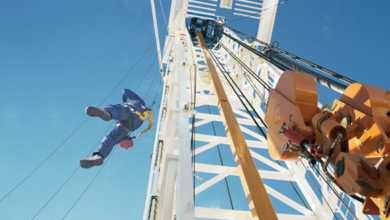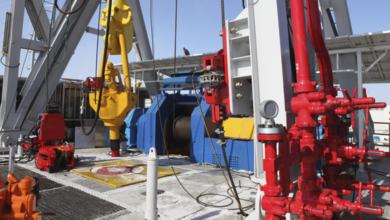HSE Corner: Industry groups enhance lifting/hoisting safety with competency standards, exams
By Graeme Lawrie, OMV

The International Association of Oil and Gas Producers (OGP) Lifting and Hoisting Task Force has been reviewing developments in defining competencies for personnel involved in lifting and hoisting tasks. There are numerous bodies around the world who have an interest in this topic, and many have been proactive in trying to better define competencies during the past few years.
In the majority of incident and accident investigations involving lifting and hoisting tasks, the training and competence issues invariably top the list of root causes of the event. As a result, companies, trade associations, regulators, classification societies and training organizations have all been striving to better define the training requirements and core competencies that are required for the different tasks performed by personnel involved in lifting and hoisting operations.
Valuable works have been carried out in this field and are available online.
One organization that recently produced a draft of new and revised competency standards for lifting and hoisting is the Offshore Petroleum Industry Training Organisation (OPITO). Although based in the UK, this organization has a growing number of international collaborations. Some of its standards are available online in Russian, ortuguese, Spanish, Bahasa and Arabic.
OPITO recently published standards for the following lifting and hoisting roles:
• Rigger training (stages 1 and 2);
• Banksman and slinging training (stages 1 and 2).
In addition, they defined the following competence standards:
• Rigger competence (stages 3 and 4);
• Banksman and slinging competence (stages 3 and 4).
OPITO defines the four stages as:
• Stage 1 – The initial training program;
• Stage 2 – Supervised workplace experience. The delegate must complete a log book record of the supervised tasks;
• Stage 3 – The formal assessment of the candidate. Successful candidates will be awarded a certificate of competence that is valid for two years; and
• Stage 4 – Re-assessment of competence. Successful recertification will extend the certificate of competence for two years.
OPITO also recently revised their Lifting Operations and Lifting Equipment Regulations (LOLER) Competent Person Competence Standard. The LOLER standard is specific to the UK. The competence standard defines the requirements for a person involved in supervising and managing a lifting operation, and it may be of interest to contractors and companies even if the specific legislation does not apply to the country in which they operate.
All standards referenced above are available on the OPITO website.
The Offshore Mechanical Handling Equipment Committee (OMHEC) also recently produced competency and skills requirements for lifting and hoisting personnel. Made up of representatives from Denmark, Norway, UK and the Netherlands, this organization has developed and published the Competence and Skills Requirements for an Enterprise of Competence of Offshore Cranes. This standard reviews the competencies associated not only with the safe operation of an offshore crane but also with safety issues relating to design, construction, maintenance, inspection, certification and verification of offshore cranes.
The OMHEC Standard is available online.
In the US, the National Commission for the Certification of Crane Operators (NCCCO) has developed a comprehensive practical examination program for the mobile crane operator, tower crane operator, overhead crane operator, signalperson, rigger and articulating crane operator. The comprehensive nature of the practical examination demands an equally comprehensive training and competence program to ensure that candidates complete and pass the examination.
Further information on training courses, examinations and certifications are available on the NCCCO website.
Graeme Lawrie is HSSE manager for OMV.




I am interested in rigger training online